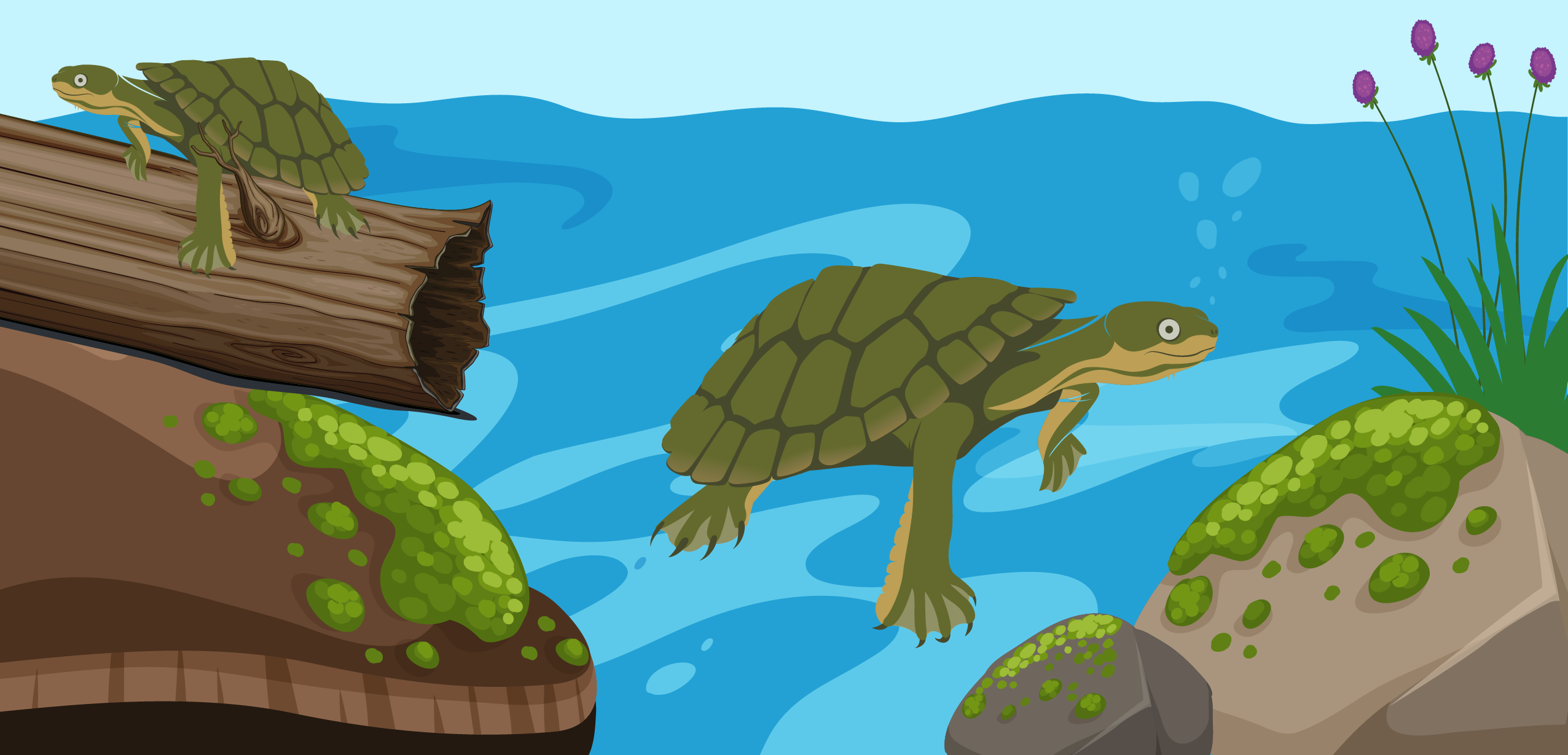
Hidden in and along our freshwater rivers and waterways, and only occasionally
seen, the Hunter Region is home to several species of freshwater turtles.
Freshwater turtles
Freshwater turtles are reptiles that have a hard shell made of bone and cartilage that helps to protect them. This outer shell is made of a top part (carapace) and a bottom part (plastron) that join together along each side of their body. Freshwater turtles are semi-aquatic, which means they spend time both in and out of the water and have webbed feet with long, sharp claws. All but one of Australia’s native freshwater turtles are known as ‘side-necked’ turtles, because they retract their head and neck beneath their shell by folding it to one side, rather than drawing their head backwards into their shell.
Important for our rivers
Freshwater turtles are omnivores and top predators in their natural habitats. They play a critical role in maintaining the diversity of life in waterways. Freshwater turtles are scavengers that eat a large range of different things including dead animals like fish, insects, reptiles, and mammals; as well as algae and plants that can cause problems in a waterway. By consuming these things, they keep their habitat clean with good water quality and breakdown and recycle nutrients back into the environment.
Turtles in trouble
Unfortunately, most of our native freshwater turtles are disappearing. Many are now considered vulnerable or endangered, with some species even thought to have become extinct.
The main threats to freshwater turtles are:
- Feral animals (Foxes, feral pigs, feral dogs and feral cats) – these animals have powerful noses and can sniff out and dig up freshwater turtle eggs, which they lay on the banks of waterways (turtle nest bottom right photo). They can also kill and eat adult turtles.
- Drying up of dams, swamps, wetlands and rivers – droughts can severely damage freshwater turtle populations.
- Eat or get tangled in human rubbish – fishing lines and hooks, nets, ropes and floats can have fatal consequences for turtles.
- Chemical pollution in the water – runoff from things like pesticides and petroleum products and even increases in salinity (salt) can harm freshwater turtles.
- Vehicle traffic – as they are semi-aquatic, freshwater turtles do spend time on the land and can be are often victims to cars and trucks.
- Removal of fallen timber (snags) and damage to riverbanks – impacting turtle habitat can reduce their ability to feed, breed and find shelter.
- Illegal removal of turtles from the wild – the pet turtle trade has a big impact on future generations of turtles.
- Competition from introduced pest waterway species – pest animals, even other turtles, compete with native turtles for food and territory.
- Viruses and diseases – introduced pests can spread intestinal parasites and other diseases that can harm freshwater turtles.
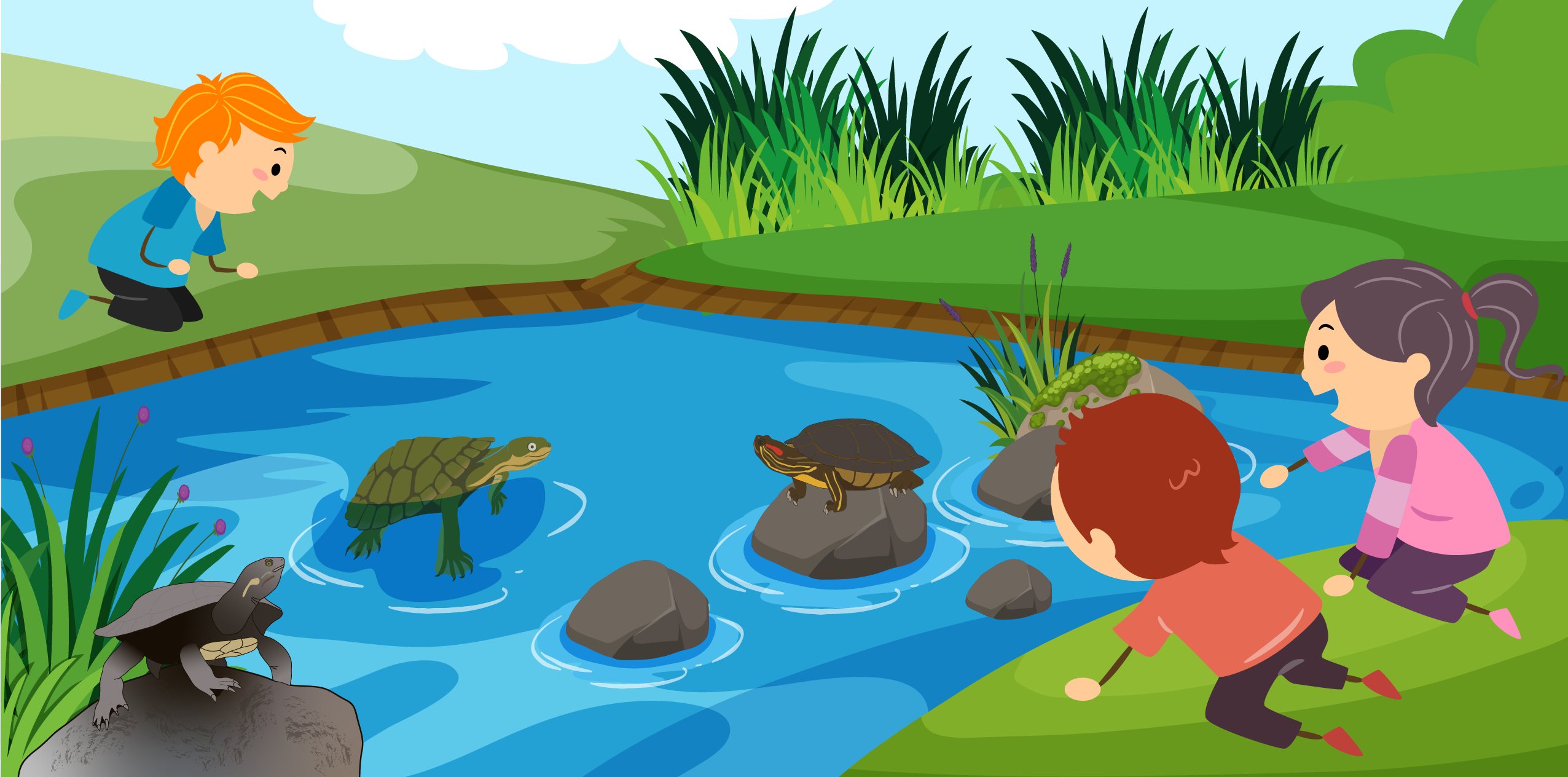
Know your turtles
Do you know which turtles are living in your waterway?
In this activity you are going to learn about three freshwater turtles living in the waterways of the Hunter region. Two of these turtles are endangered and one is a pest species. It is important to know how to identify the differences between them when visiting local waterways.
Step 1
Read the fact sheets called ‘Meet the Turtles‘. Find out what you can about them and look at the extra web links provided for more detailed information.
Step 2
Print out a copy of the ‘Describing Turtles’ activity sheet. Use the group of words provided to fill in the identification blanks of our three turtles. If you need any help, refer to the descriptions in the fact sheets.
Step 3
Create a poster about the Manning River Helmeted Turtle using the activity sheet as a guide. Colour-in the turtle image, research the relevant facts about the turtle and include them on your poster.
Once you have completed your poster, send us a photo of it and we’ll display in on the Adventures at Your Place website. You might like to create posters about the other two turtles too.
Meet the turtles
Manning River Helmeted Turtle
(Myuchelys purvisi)
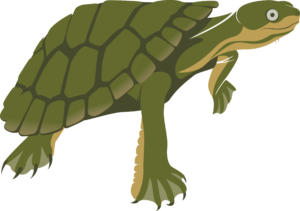
The Manning River Helmeted Turtle is truly a marvel of the Hunter Region. They are an iconic, ancient, native animal that has been in existence for around 55 million years and are only found in the mid and upper reaches of Manning River Catchment.
The Manning River Helmeted Turtle has a yellow stripe along the jaw ans neck line as well as on the sides and tail. There are two short barbels that look like whiskers on the lower jaw. The top of the head has a cap or helmet of hard skin. The plastron (bottom part of shell) is typically yellow with dark margins around the shields.
The tail of males is longer than females. Young Manning River Helmeted Turtles have patches and streaks of bright yellow on the lower surfaces of their head, neck, limbs and tail, although this tends to fade with age.
The Manning River Helmeted Turtle usually lives in fast flowing, clear streams that are between 2-3 metres in depth. Their habitat consists of both rocky and sandy rivers that have deep pools and structure, such as boulders, logs and underwater caverns.
Manning River Helmeted Turtles are omnivorous (eat plants and animals), predominantly feeding during the daytime on large insects, fruit and water plants. They also help control aquatic vegetation and serve as scavengers, assisting to maintain healthy streams and rivers.
Unfortunately, these turtles are in trouble! They have been classified as endangered, which means that if we don’t take steps to try and protect them, we may lose them altogether.
Learn more about the Manning River Helmeted Turtle, their threats and the work being done to restore their population.
Hunter River Turtle
(Emydura macquarii gunabarra)
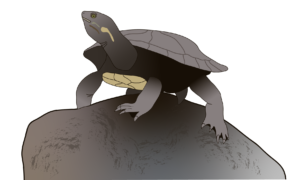
The Hunter River Turtle is a short-necked turtle with a bright yellow-green eye. It has a single cream or yellow streak along the side of its head and neck. Young animals sometimes have pale yellow spots behind the eyes. The plastron (bottom part of the shell) is a cream or pale yellow colour.
Hunter River Turtles often like to bask on logs in the sun. They eat large amounts of water plants, algae and waterbugs and can be scavengers, assisting in keeping out streams and rivers healthy.
The Hunter River Turtle is related to the Murray River Turtle or Macquarie River Turtle. It is a rare sub-species that is only found in the Hunter River, especially near Moonan Flat.
Learn more about the Hunter River Turtle, their threats and about the work being done to help restore their population.
Red-eared Slider Turtle
(Trachemys scripta elegans)
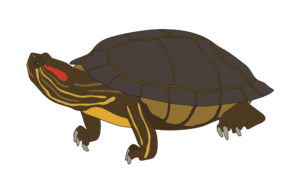
The Red-eared Slider Turtle is a pest species (feral animal) from North America. They are a popular pet that has been introduced into NSW waterways by people doing the wrong thing and releasing them into the wild.
They have a broad red stripe behind their eyes and narrow yellow stripes on their head, neck and limbs. Red-eared Slider Turtles have the ability to draw their head straight back under the shell, rather than folding it to one side.
The name ‘slider’ refers to the turtle’s habit of slipping into the water when disturbed while basking on a rock or log.
Red-eared Slider Turtles are also omnivorous, eating a wide range of both plants and animals. They upset the biodiversity of our waterways by competing with native turtles for food and territory.
Red-eared Slider Turtles are a threat to both the Manning River Helmeted Turtle and the Hunter River Turtle.
Learn more about this feral pest and why it is listed as one of the world’s 100 most invasive species.
Send us a photo of your Manning River Helmeted Turtle poster
With parent/guardian permission, submit a photo of your Manning River Helmeted Turtle poster and it could be displayed on the website and the Hunter Local Land Services Facebook page.
